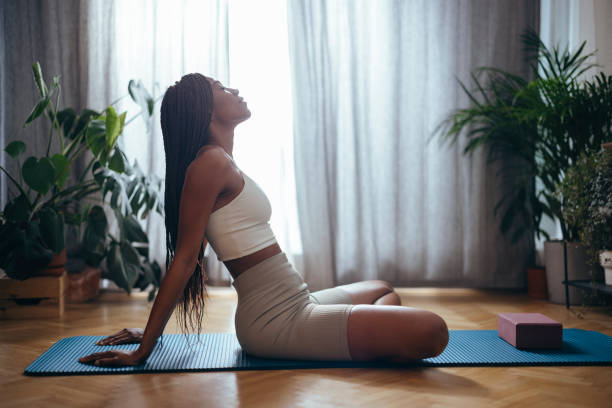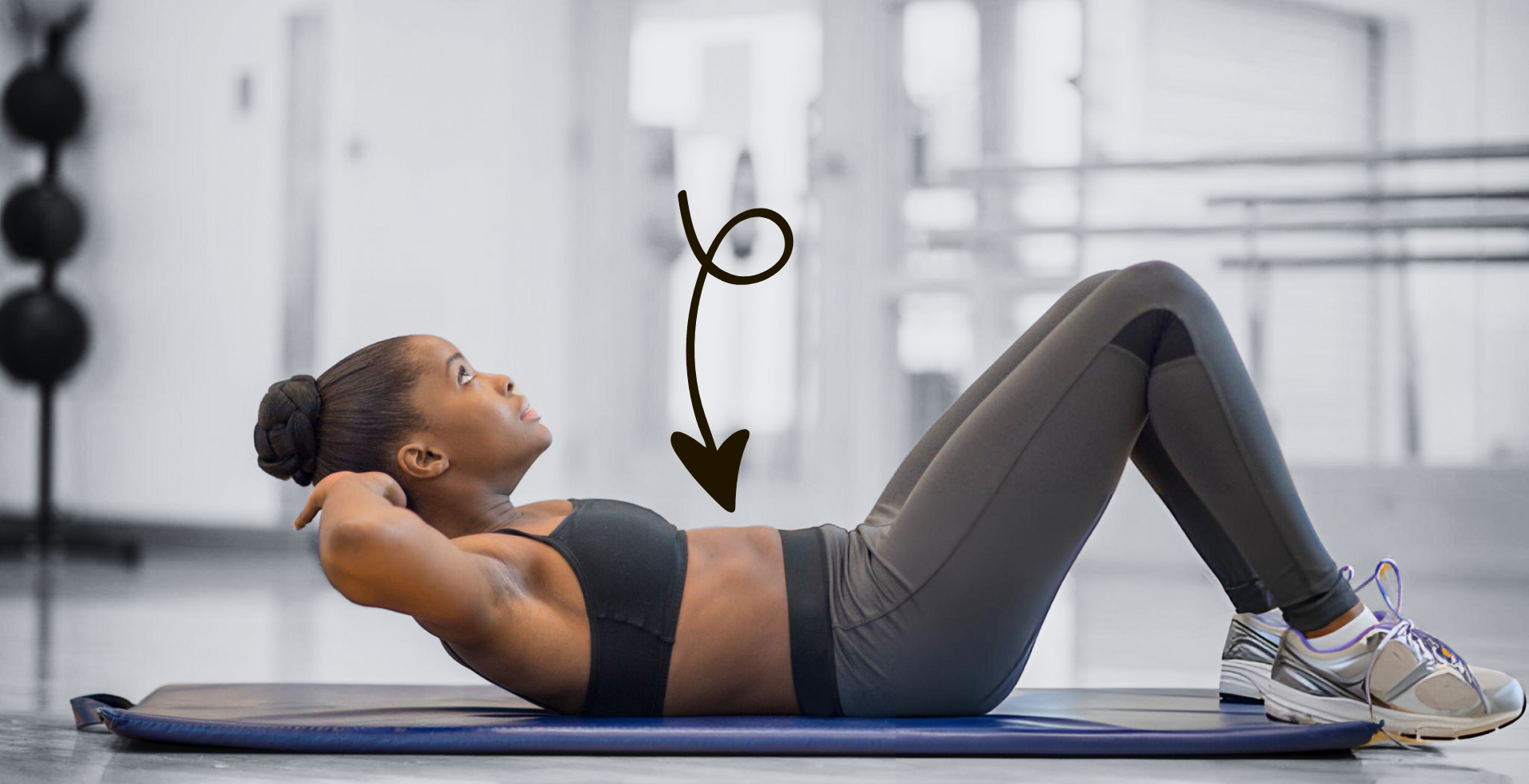Whether it’s aiming for a flat belly, strong core, rehabilitating the pelvic floor, or alleviating back pain, everyone has their reasons to start moving and tone their abdominal muscles. But when you think of strong core workouts, do you dread the numerous gruelling sessions needed to see results?
Surprisingly, with just the right outfit and a workout mat, a few well-executed movements can transform your perspective. The key is to follow specific rules to avoid injury and ensure deep muscle engagement.
“Regardless of the exercise, breathing is central; without it, the targeted area won’t be properly stimulated and the risk of injury increases,” explains Cyrielle Bonnin, a physiotherapist specialising in abdominal rehabilitation.
Here are the top seven exercises to effectively target these muscles and get a strong core without even getting up.

The crunch: The go-to exercise for strong core
Let’s start with a classic. The crunch is a staple in abs workouts because it’s highly effective and delivers quick results—if done correctly, as Bonnin notes. Here’s how to do it:
Lie on your back with bent knees, feet flat on the floor at hip-width. Place your fingertips on your temples or behind your head. Inhale and, as you exhale, contract your pelvic floor, pull your belly in by drawing your navel inwards to engage the transverse muscle—a deep muscle—and lift your head, shoulders, and torso off the ground, bringing them towards your pelvis while maintaining the contraction. Lower your head back down and inhale. Keep space between your chin and chest and avoid pulling on your neck with your hands.
“If the movement isn’t done on the exhale, the transverse muscle won’t contract properly and could put pressure on the pelvic floor,” she explains. However, “it’s best avoided by those with back problems,” especially if not mastered.
For beginners, the physiotherapist suggests bringing the elbows closer and directing the movement towards the ceiling rather than the pelvis, as it better engages the transverse muscle. To make it harder, “lift your feet with your calves parallel to the floor and, as you progress, lift your torso higher.”
The reverse crunch: Easier to perform
Also known as the “reverse crunch,” this exercise is easier to perform and primarily targets the rectus abdominis, with “less emphasis on the transverse muscle,” the expert explains.
Lying on your back with your hands by your sides, instead of bringing your torso to your knees, bring your knees towards your torso. “On the exhale, lift your feet off the floor while contracting your abs and drawing your belly in, bringing your knees towards your chest, then reverse the motion without letting your feet touch the floor,” she instructs.
For the more advanced, “place a resistance band around your thighs and spread your knees as you bring them to your chest, working your thighs and glutes simultaneously.”
Alternating or cross scissors: Targeting the rectus abdominis
Lying down with legs straight and together or sitting on your mat, lean slightly backward with a posterior pelvic tilt while keeping your back straight.
Then, lift your head slightly off the floor, tucking your chin in to look at your legs. Apply the same breathing principle, activating the movement on the exhale, and lift your legs to your chosen height. Straighten them and perform alternating or cross scissors movements.
In this exercise, the legs are active; the feet are pointed, and the lower back is pressed against the floor. This targets both the rectus abdominis and the quadriceps.
“However, like crunches, this exercise is not recommended if you have back pain,” she notes.
Heel touches: For working the obliques
To activate the oblique muscles, you can lift your torso with hands behind your head, so the right elbow reaches the left hip and vice versa, but the heel touches are even better.
In the same starting position, “with toes touching the floor and arms extended along your sides,” lift your shoulders slightly off the ground and reach for your ankle on one side, then the other. Perform the movement on the exhale, “starting with the contraction of the abdominal and pelvic floor muscles.”
“To intensify the exercise, gradually move your feet further from behind your buttocks,” she suggests, adding that it’s “less traumatic for the back.”
If the movement is painful or difficult, the physiotherapist recommends “placing your hands on the opposite sides of your thighs (right hand on left thigh) and inhaling to inflate your belly, then, on the exhale, applying pressure on the thigh with your hand.” As you progress, you can also lift your feet a few centimetres off the ground, “engaging the arms and legs.”
The V-up: The go to move for a strong core
For this exercise, lie on your back and extend your legs. On the exhale, bring your legs towards you while keeping them straight until they form a right angle. Then, lower them slowly without letting them touch the floor. Another version is to perform this movement with extended arms, lifting your torso to try to touch your toes, forming a “V” with your body.
However, this variant is “not recommended for beginners because if done incorrectly, it can cause a herniated disc,” she warns. On the other hand, someone who masters breathing and regularly engages their abs can try it to strengthen deep muscles.
Be careful not to collapse onto the floor when lowering your limbs.
The hip thrust for abs and glutes
For this position, start lying on the floor with hands along your sides and feet hip-width apart. Then, tilt your pelvis upward and lift your hips towards the ceiling. You can also clasp your hands on the floor for more stability and height. Lower back down on the inhale without collapsing.
To increase difficulty, extend or bend one leg and repeat the movement with your calf parallel to the floor, then switch legs.
“This exercise activates the glutes, rectus abdominis, and transverse muscles,” she explains.
The stomach vacuum: A static but effective technique
“There are several ways to perform this rather static abdominal technique, which works deeply and is also used postpartum,” the specialist notes.
To do this, lying on your back, “inhale to inflate your belly, then hold the air to move it slowly into your chest, which inflates in turn. Hold the air for a few seconds, then exhale,” she explains. If you struggle, you can also perform this exercise with elbows raised and bent on either side of your body, “creating the sensation of pushing against the floor, aiding the movement and breathing,” she concludes.
This technique protects both the back and pelvic floor from damage.
This article was syndicated from Marie Claire France
Translated and adapted by Praise Vandeh, Marie Claire Nigeria Content Writer


